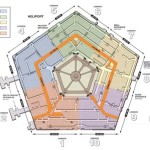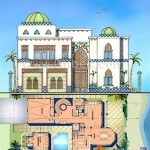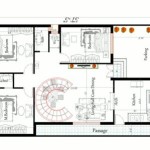Plan of a Roman House: An Architectural Overview
Roman houses, while varied in size and opulence, followed a general architectural plan that reflected the social and cultural values of the Roman world. Understanding this plan offers insights into the daily lives of Romans from different social strata.
Key Features of a Typical Roman House Plan
The typical Roman house, known as a domus, was designed around a central axis and organized around a series of open spaces and enclosed rooms. Several key features defined this basic structure:
* Atrium: The central hall and focal point of the house, the atrium was partially open to the sky, allowing light and rainwater to enter the impluvium, a shallow basin located below. The atrium served as the main reception area and often contained a small household shrine (lararium). * Impluvium: This shallow basin, situated in the floor of the atrium, collected rainwater, which then flowed into a cistern beneath the house. This provided a source of fresh water for domestic use. * Compluvium: The opening in the atrium roof directly above the impluvium. It allowed light and rainwater to enter the house. * Vestibulum: An entrance hall or corridor located between the street door and the atrium, offering a degree of privacy and security. * Cubicula: Small, private rooms typically used as bedrooms, located off the atrium or around the peristyle. * Triclinium: The formal dining room, designed to accommodate three couches on which diners reclined. * Tablinum: An office or study, often located between the atrium and the peristyle. It served as a place for the head of the household to receive clients and conduct business.
Variations in Roman House Designs
While the basic layout remained consistent, Roman houses exhibited significant variations based on the wealth and social standing of the owner. Larger and more elaborate houses often included additional features:
* Peristyle: A colonnaded garden or courtyard, typically located at the rear of the house. Peristyles provided a private outdoor space for relaxation and entertainment. * Hortus: A larger garden, sometimes incorporating orchards or vineyards, found primarily in wealthy homes. * Culinary Areas: Kitchens (culina) were often situated near the back of the house for practicality. Larger houses might also have separate pantries and storage rooms. * Baths (Balneum): Private bathing facilities, though not always present, were considered a mark of luxury. * Exedra: A semi-circular or rectangular recess, often located in the peristyle, providing a sheltered space for conversation or relaxation.
The Domus and the Insula: Contrasting Roman Dwellings
While the domus represents the quintessential image of Roman housing, it's important to note that not all Romans lived in such dwellings. A significant portion of the urban population, particularly the lower classes, resided in multi-story apartment buildings called insulae.
* Insulae: These apartment blocks, often reaching several stories high, were constructed of timber and brick. * Density and Affordability: Insulae provided more affordable housing options in densely populated urban centers. * Varying Quality: The quality of insulae varied considerably. Some offered comfortable living arrangements, while others were cramped, poorly maintained, and prone to fire.
Influence of Social and Cultural Values on Design
The design of the Roman house reflected the social and cultural norms of Roman society. The emphasis on the atrium as a central gathering space demonstrates the importance of family and social interaction. The layout also prioritized privacy, with private rooms situated away from the public areas of the house. The architectural choices further emphasized the Roman appreciation for light, air, and water.
* Family Life: The layout of the Roman house fostered interaction between family members and provided a space for hosting guests and clients. * Privacy and Security: The vestibulum and the arrangement of interior spaces offered a level of privacy and security from the outside world. * Natural Elements: The incorporation of the compluvium, impluvium, and peristyle reflect a Roman appreciation for natural elements. * Social Status: The size and elaboration of a house, including the presence of features like a peristyle or private baths, served as a clear indicator of social standing.
Materials and Construction Techniques
Roman houses were built using a range of materials and construction techniques. The materials employed influenced the durability and appearance of the dwellings.
* Stone and Brick: These were commonly used for load-bearing walls and foundations, ensuring the stability of the structure. * Timber: Wood was frequently used for roofing, flooring, and interior partitions. * Concrete: Roman concrete, a remarkably strong and versatile material, played a significant role in construction, particularly in later periods. * Marble and Mosaics: Wealthy Romans adorned their houses with marble veneers, intricate mosaics, and frescoes, demonstrating their affluence and artistic taste.
Legacy of Roman House Plans
The influence of Roman house design can be observed in later architectural styles. The concepts of the atrium and the peristyle, for example, have been adapted and reinterpreted in various forms throughout architectural history.

Roman Domestic Architecture Domus Article Khan Academy

Roman House

Plan Of A Pompeian House Roman Courtyard Plans Villa

Pin By Rebecca Koch On Ancient Rome Roman Bath House Floor Plans

Elegant Roman House With Atrium And

Floor Plan Of A Typical Roman Atrium House Scientific Diagram

Domus Wikipedia

A Atrium Of Roman House E Central Hall With Roof Opening At The Scientific Diagram

View Page Roman Atrium Style Housing

House Of The Vine Museums Victoria








